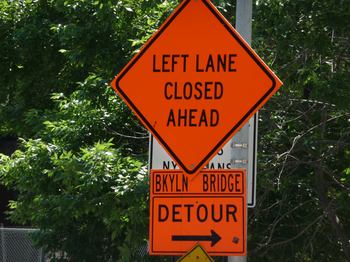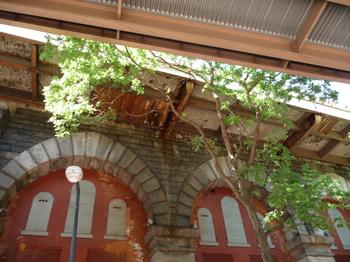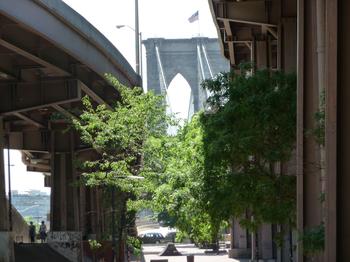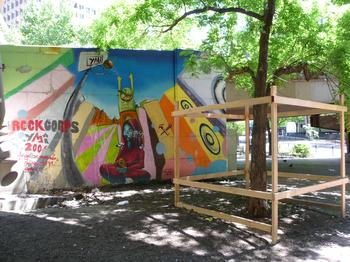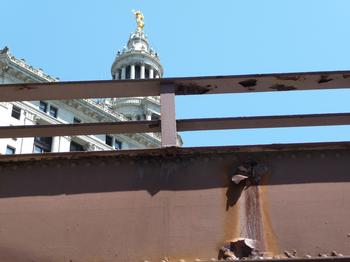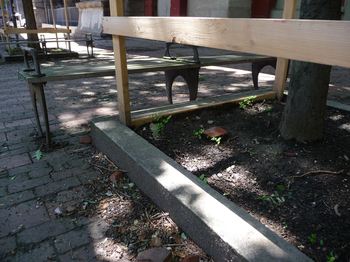The specifications for the work done on the Brooklyn Bridge, as prepared by the New York City Department of Transportation, contain information about each item to be used in the bridge rehabilitation. We took a look at one item: $1,300 tree guards. Are they worth the cost, do they actually protect the trees--and are these trees we should be protecting in the first place?
WNYC's Richard Hake and Kate Hinds went down to Red Brick Park to get the opinion of Carsten Glaeser, an arborist who has consulted on a number of city projects. The trees in this area -- red oaks, locusts, Callery pear trees -- are standard urban trees, and Dr. Glaeser estimates to be about 14 years old. And most of them have pieces of plywood around the base (he described the guards as resembling "mini corrals") designed to prevent injury by acting as a barrier to, say, an errant backhoe. Is it worth it?
"We're looking at a tree guard that's probably priced at less than $100....that's not a $1,300 tree protection barrier that we're looking at," Dr. Glaeser says.
Some of the trees in Red Brick Park look healthy--but unsurprisingly, the trees that are planted between the ramps are, in his words, "scraggly." So why bother trying to protect these trees? "Nobody wants to be blamed for initiating a tree removal. Nobody," he says. "So what we see happening here is everybody is going to do whatever they can to protect a tree, and in the end, it may not even be worth saving. These trees all have a value--but is it the right tree in the right place under these circumstances?"
So when planting a tree, think location, location, location. Not to mention the future. That oak that the city plants near a ramp may one day have a 50-foot tall canopy brushing up against a ramp. Dr. Glaeser would like to see more strategy surrounding the care and planting of trees--not just more trees. But in the end, he shares the same philosophy as the Lorax.
"What I think the real question here is: who speaks for the trees?"
We asked the NYCDOT for comment, and their deputy press secretary replied:
"The bid figure includes installation and complete year-round maintenance (including replacement) of the tree guards for the multi-year duration of the contract. Plywood is not used and the guards are secured by fencing...These are commercial 2"x4" posts, which are usually spruce, Douglas-fir, or Southern Yellow Pine. As you saw, the posts go up at four corners, there are top and mid rails. The guards are still being constructed (the area is not yet occupied), and the next steps will include the addition of plastic fencing around the wooden structures."
So: it sounds like there is more to come on the tree guards, namely plastic fencing and ongoing maintenance. We'll be watching the trees over the course of the bridge work and watch how they fare. Help us watch them here.
